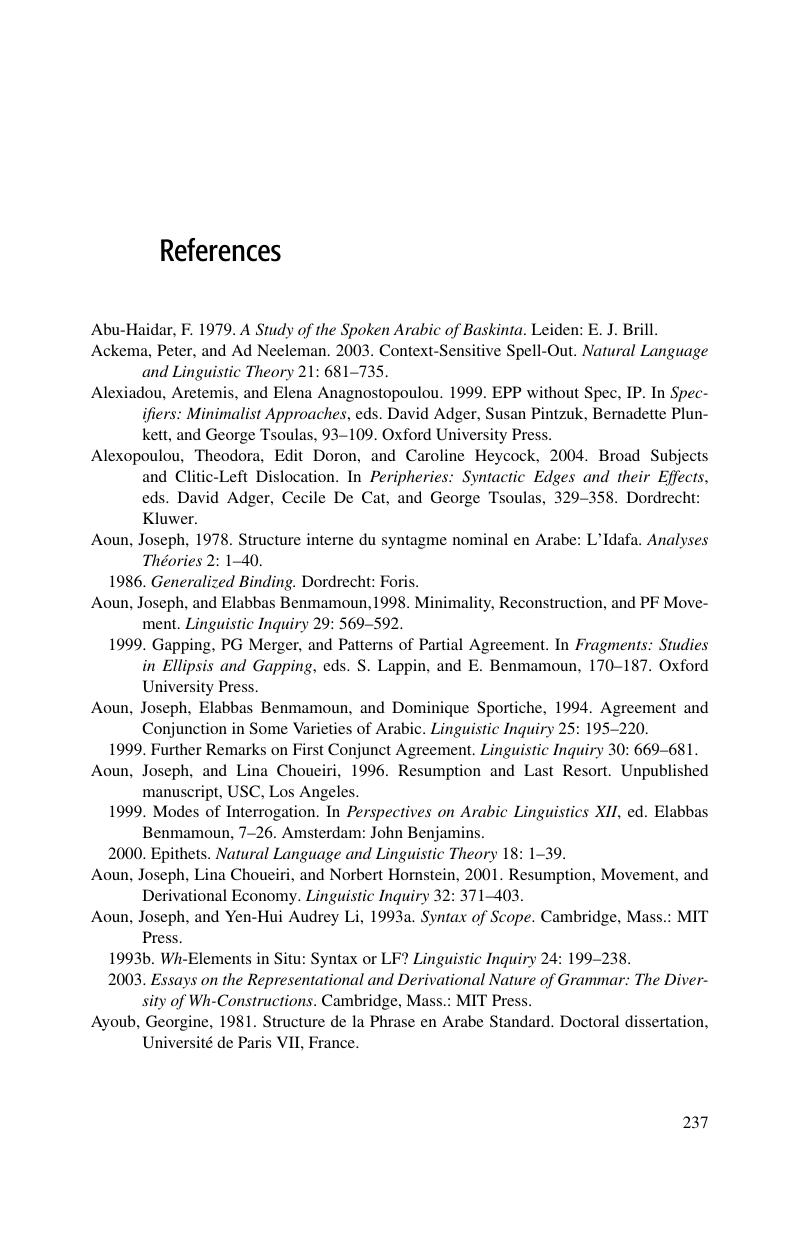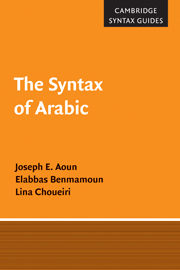Book contents
- Frontmatter
- Contents
- List of abbreviations
- 1 Issues in the syntax of Arabic
- 2 Clause structure in Arabic
- 3 The syntax of subjects
- 4 Sentential agreement
- 5 The syntax of sentential negation
- 6 Modes of wh-interrogation
- 7 Restrictive relatives
- 8 Clitic-left dislocation and focus constructions
- 9 The syntax of the Arabic left periphery
- References
- Index
- References
References
Published online by Cambridge University Press: 30 March 2010
- Frontmatter
- Contents
- List of abbreviations
- 1 Issues in the syntax of Arabic
- 2 Clause structure in Arabic
- 3 The syntax of subjects
- 4 Sentential agreement
- 5 The syntax of sentential negation
- 6 Modes of wh-interrogation
- 7 Restrictive relatives
- 8 Clitic-left dislocation and focus constructions
- 9 The syntax of the Arabic left periphery
- References
- Index
- References
Summary

- Type
- Chapter
- Information
- The Syntax of Arabic , pp. 237 - 244Publisher: Cambridge University PressPrint publication year: 2009

